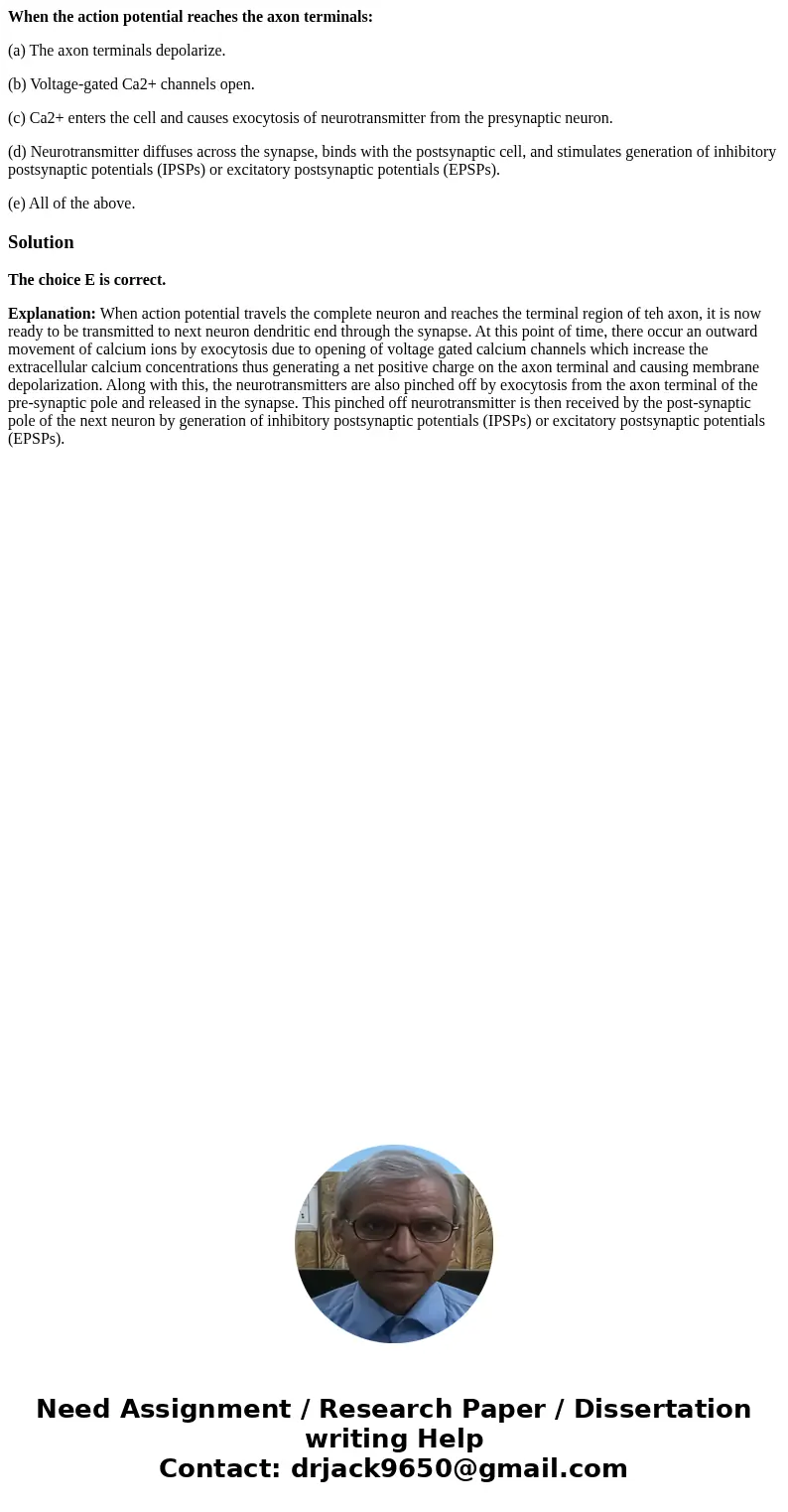When the action potential reaches the axon terminals a The a
When the action potential reaches the axon terminals:
(a) The axon terminals depolarize.
(b) Voltage-gated Ca2+ channels open.
(c) Ca2+ enters the cell and causes exocytosis of neurotransmitter from the presynaptic neuron.
(d) Neurotransmitter diffuses across the synapse, binds with the postsynaptic cell, and stimulates generation of inhibitory postsynaptic potentials (IPSPs) or excitatory postsynaptic potentials (EPSPs).
(e) All of the above.
Solution
The choice E is correct.
Explanation: When action potential travels the complete neuron and reaches the terminal region of teh axon, it is now ready to be transmitted to next neuron dendritic end through the synapse. At this point of time, there occur an outward movement of calcium ions by exocytosis due to opening of voltage gated calcium channels which increase the extracellular calcium concentrations thus generating a net positive charge on the axon terminal and causing membrane depolarization. Along with this, the neurotransmitters are also pinched off by exocytosis from the axon terminal of the pre-synaptic pole and released in the synapse. This pinched off neurotransmitter is then received by the post-synaptic pole of the next neuron by generation of inhibitory postsynaptic potentials (IPSPs) or excitatory postsynaptic potentials (EPSPs).

 Homework Sourse
Homework Sourse